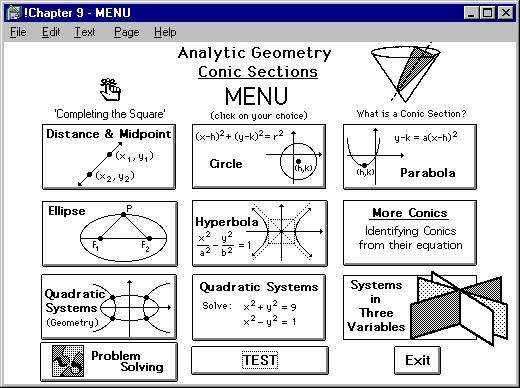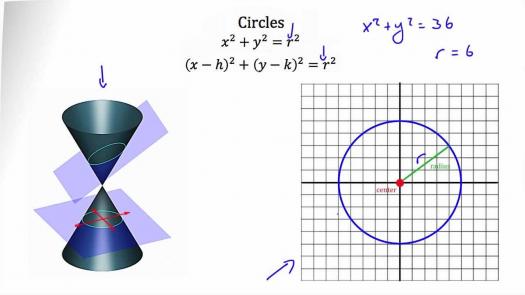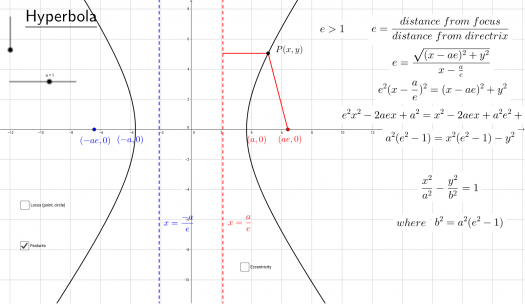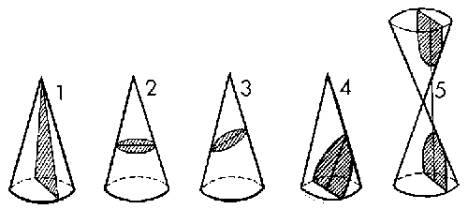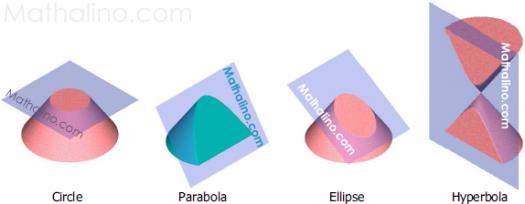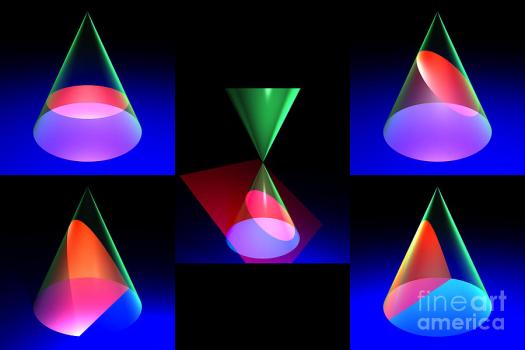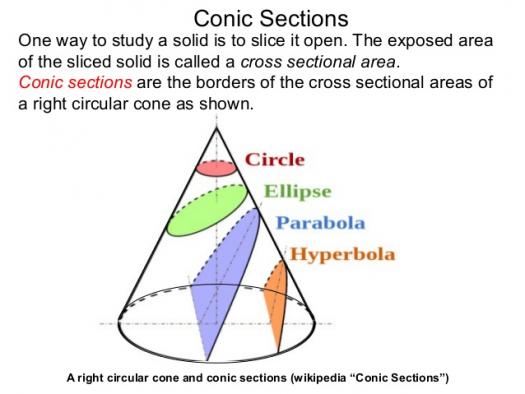What Do You Know About Conic Sections?
-
There are how many types of conic section?
-
One
-
Two
-
Three
-
Four
-
In mathematics, a conic section (or simply conic) is a curve obtained as the intersection of the surface of a cone with a plane. Take the quiz to find out more.

- 2.
The conic sections have been studied by the ancient .....
-
Greek mathematician
-
Latin mathematician
-
Russian mathematician
-
British mathematician
Correct Answer
A. Greek mathematicianExplanation
The conic sections, which include the circle, ellipse, parabola, and hyperbola, were extensively studied by ancient Greek mathematicians. They made significant contributions to the understanding and properties of these curves, with prominent mathematicians such as Euclid, Apollonius of Perga, and Archimedes delving into the subject. Their work laid the foundation for the development of conic section theory and its applications in various fields of mathematics and science.Rate this question:
-
- 3.
The conic sections have been studied by the ancient Greek mathematicians with this work culminating around
-
100 B.C
-
200 B.C
-
300 B.C
-
Option 4
Correct Answer
A. 200 B.CExplanation
The conic sections were extensively studied by ancient Greek mathematicians, and their work on this subject reached its peak around 200 B.C. During this time, mathematicians such as Euclid and Apollonius made significant contributions to the understanding and classification of conic sections, including the properties of ellipses, parabolas, and hyperbolas. Their work laid the foundation for further advancements in geometry and calculus.Rate this question:
-
- 4.
The greatest progress in the study of conics by the ancient Greeks is due to ....
-
Euclid
-
Apollonius of Perga
-
Menaechmus
-
Archimedes
Correct Answer
A. Apollonius of PergaExplanation
Apollonius of Perga is credited with making the greatest progress in the study of conics by the ancient Greeks. He is known for his work "Conics," in which he extensively studied and classified different types of conic sections, including the ellipse, parabola, and hyperbola. Apollonius' work laid the foundation for the modern understanding of conic sections and their properties. His contributions greatly advanced the field of mathematics and had a lasting impact on the study of conics.Rate this question:
-
- 5.
..... (died c. 350 CE) is credited with expounding on the importance of the concept of a conic's focus, and detailing the related concept of a directrix, including the case of the parabola (which is lacking in Apollonius's known works).
-
Archimedes
-
Euclid
-
Menaechmus
-
Pappus of Alexandr
Correct Answer
A. Pappus of AlexandrExplanation
Pappus of Alexandr is credited with expounding on the importance of the concept of a conic's focus and detailing the related concept of a directrix, including the case of the parabola. This means that Pappus of Alexandr contributed to the understanding of the geometric properties of conic sections, specifically focusing on the focus and directrix of these curves. This knowledge was lacking in the known works of Apollonius, another important mathematician of the time. Therefore, Pappus of Alexandr is the correct answer as he made significant contributions to the study of conic sections.Rate this question:
-
- 6.
An instrument for drawing conic sections was first described in ....
-
1000 CE
-
2000 CE
-
3000 CE
-
4000 CE
Correct Answer
A. 1000 CEExplanation
The correct answer is 1000 CE. This means that an instrument for drawing conic sections was first described in the year 1000 CE.Rate this question:
-
- 7.
An instrument for drawing conic sections was first described in 1000 CE by the Islamic mathematician ......
-
Muhammed
-
Al-Kuhi
-
Yusuf
-
Dawud
Correct Answer
A. Al-KuhiExplanation
Al-Kuhi, an Islamic mathematician, is credited with describing the instrument for drawing conic sections in 1000 CE. This instrument was a significant development in mathematics and allowed for the accurate construction of conic sections, which are important curves in geometry. Al-Kuhi's contribution in describing this instrument showcases the advancements made by Islamic mathematicians during the medieval period.Rate this question:
-
- 8.
..... extended the theory of conics through the "principle of continuity", a precursor to the concept of limits.
-
Albert Einstein
-
Johannes Kepler
-
Isaac Newton
-
Bill Nye
Correct Answer
A. Johannes KeplerExplanation
Johannes Kepler extended the theory of conics through the "principle of continuity", which is a precursor to the concept of limits. This means that Kepler built upon the existing understanding of conics and developed the idea of continuity, which eventually led to the concept of limits. Although Albert Einstein, Isaac Newton, and Bill Nye are all notable figures in their respective fields, they did not specifically contribute to the extension of the theory of conics through the principle of continuity.Rate this question:
-
- 9.
Kepler first used the term foci in ....
-
1604
-
1514
-
1918
-
2008
Correct Answer
A. 1604 -
- 10.
Mathematics is usually studied in the ....
-
School
-
Church
-
Mosque
-
Museum
Correct Answer
A. SchoolExplanation
Mathematics is usually studied in school because it is a fundamental subject taught in educational institutions. Schools provide a structured environment with qualified teachers who can teach and guide students in understanding mathematical concepts and solving problems. Additionally, schools have resources such as textbooks, classrooms, and interactive tools that facilitate the learning and practice of mathematics. Therefore, it is the most appropriate and common place for students to study mathematics.Rate this question:
-
Quiz Review Timeline (Updated): Mar 20, 2023 +
Our quizzes are rigorously reviewed, monitored and continuously updated by our expert board to maintain accuracy, relevance, and timeliness.
-
Current Version
-
Mar 20, 2023Quiz Edited by
ProProfs Editorial Team -
Feb 01, 2018Quiz Created by
Livyn
 Back to top
Back to top



